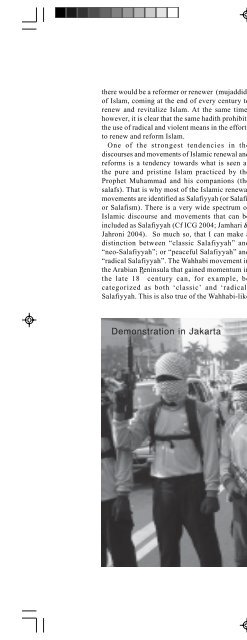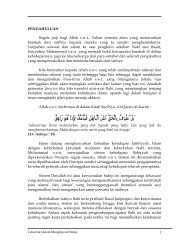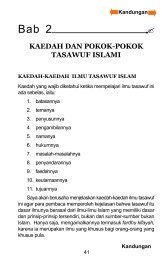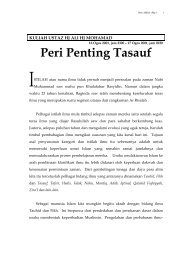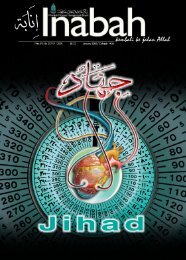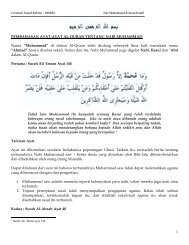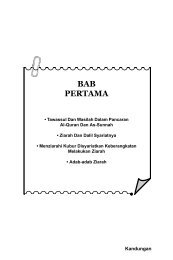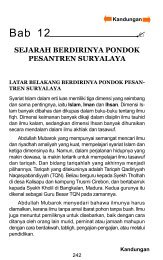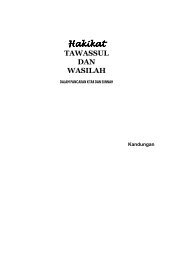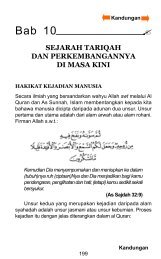inab3 cover front.psd - Khadijah Mosque
inab3 cover front.psd - Khadijah Mosque
inab3 cover front.psd - Khadijah Mosque
You also want an ePaper? Increase the reach of your titles
YUMPU automatically turns print PDFs into web optimized ePapers that Google loves.
there would be a reformer or renewer (mujaddid)<br />
of Islam, coming at the end of every century to<br />
renew and revitalize Islam. At the same time,<br />
however, it is clear that the same hadith prohibits<br />
the use of radical and violent means in the efforts<br />
to renew and reform Islam.<br />
One of the strongest tendencies in the<br />
discourses and movements of Islamic renewal and<br />
reforms is a tendency towards what is seen as<br />
the pure and pristine Islam practiced by the<br />
Prophet Muhammad and his companions (the<br />
salafs). That is why most of the Islamic renewal<br />
movements are identified as Salafiyyah (or Salafi,<br />
or Salafism). There is a very wide spectrum of<br />
Islamic discourse and movements that can be<br />
included as Salafiyyah (Cf ICG 2004; Jamhari &<br />
Jahroni 2004). So much so, that I can make a<br />
distinction between “classic Salafiyyah” and<br />
“neo-Salafiyyah”; or “peaceful Salafiyyah” and<br />
“radical Salafiyyah”. The Wahhabi movement in<br />
the Arabian Peninsula that gained momentum in<br />
the late 18th<br />
century can, for example, be<br />
categorized as both ‘classic’ and ‘radical’<br />
Salafiyyah. This is also true of the Wahhabi-like<br />
Padri movement in West Sumatra in the 19th<br />
century, described briefly earlier, which was<br />
“classic Salafism”, where internal factors with<br />
the Muslim ummah or community were its<br />
driving force.<br />
The spectrum of “neo Salafiyyah” discourses<br />
and movements is certainly very complex. The<br />
term “neo” in the first instance refers to the period<br />
of the modern period, beginning with the harsh<br />
encounters between Muslim societies th and Western<br />
colonial powers from the 16 century onwards.<br />
During this period, the external factors—<br />
associated mostly with the Western world—that<br />
could incite radicalism became increasingly more<br />
and more dominant. In fact, the West has been<br />
accused by many Muslims as being responsible<br />
for many, if not most, of the problems that<br />
Muslims have faced in the last several centuries.<br />
Con<strong>front</strong>ing continued Western political,<br />
economic and cultural domination and hegemony,<br />
many Muslims were afflicted by a kind of<br />
defensive psychology that led to, among others,<br />
a belief in “conspiracy theories”.<br />
There were of course outbursts of Muslim<br />
Demonstration in Jakarta<br />
Masjid <strong>Khadijah</strong> 29


